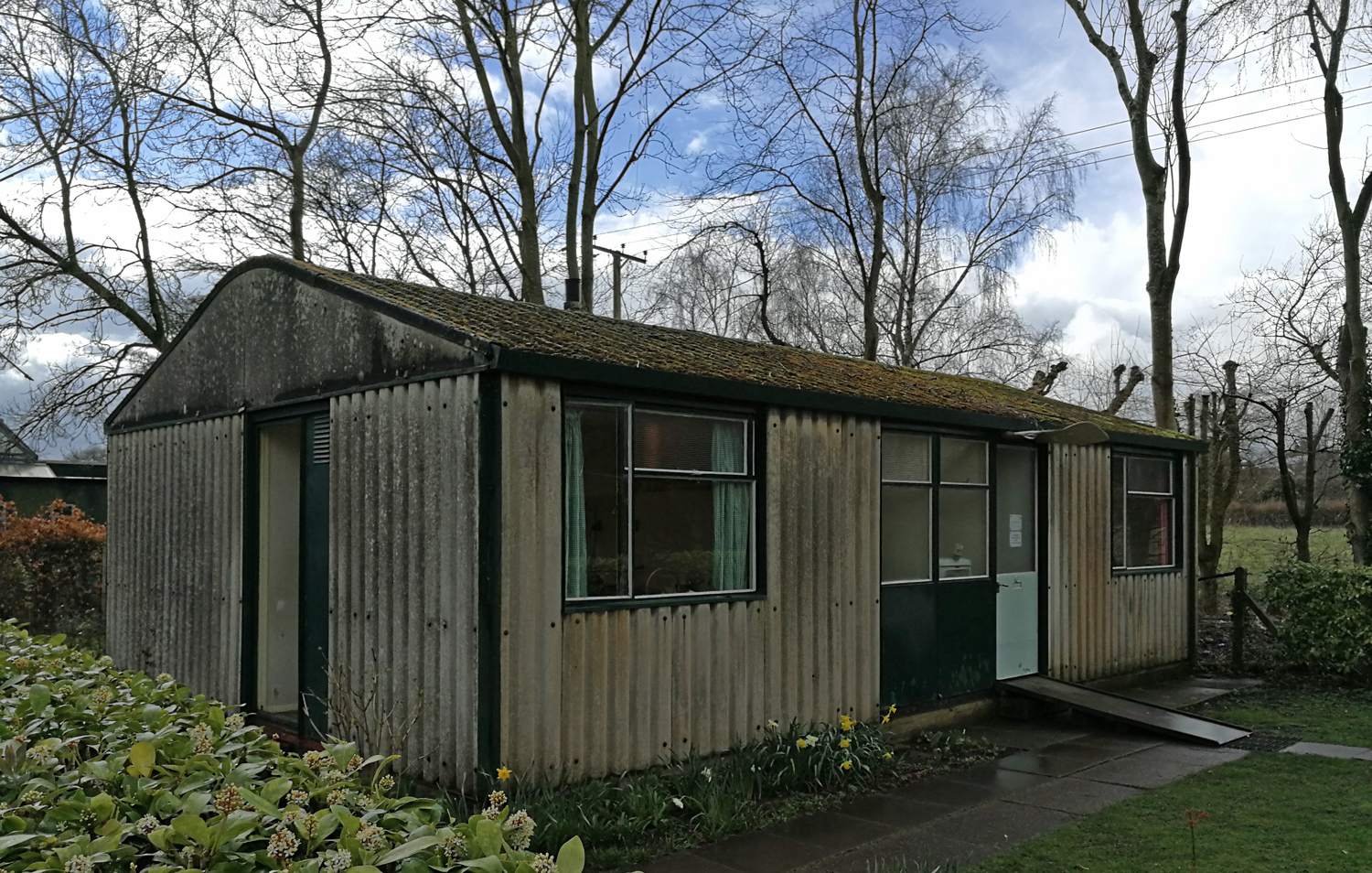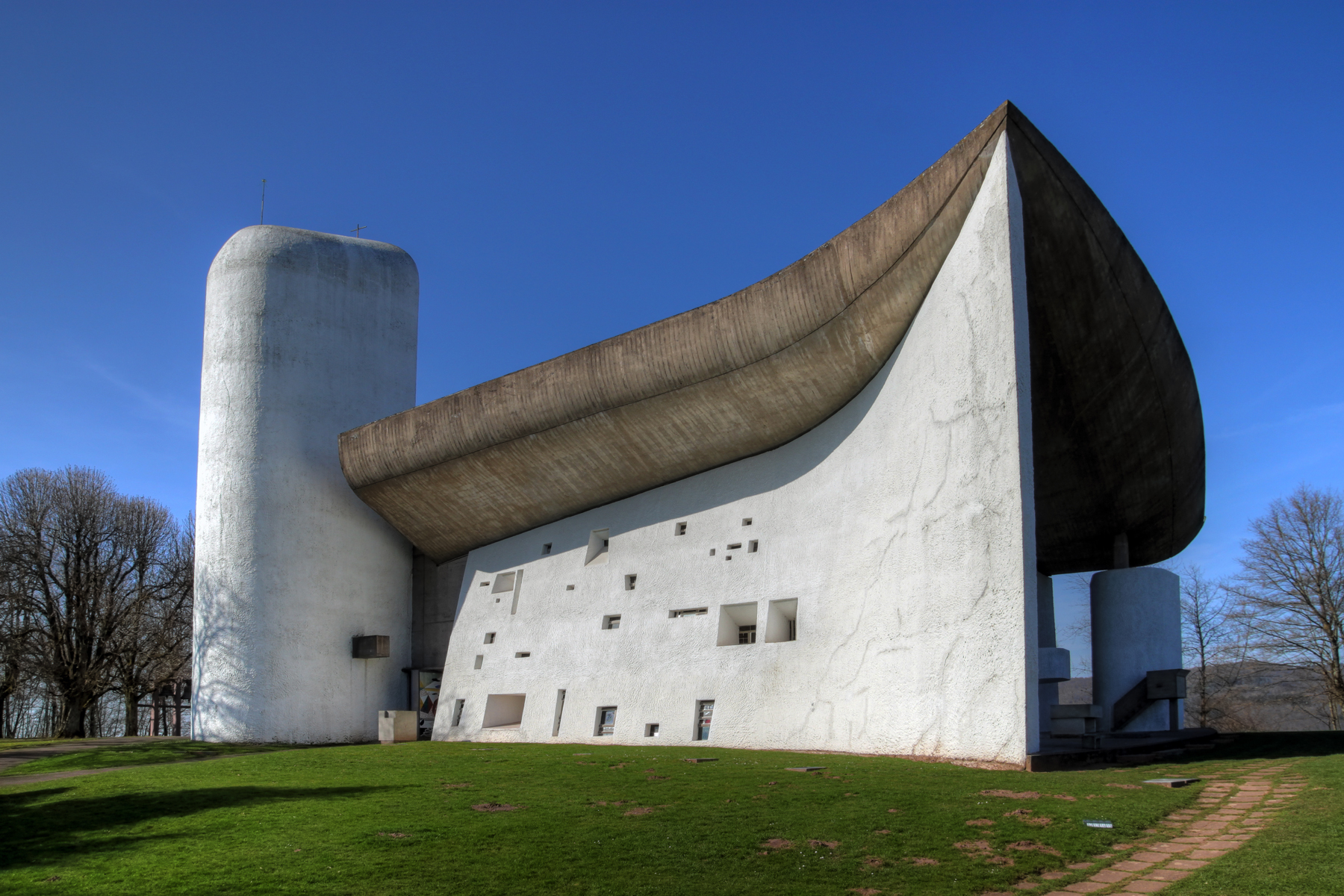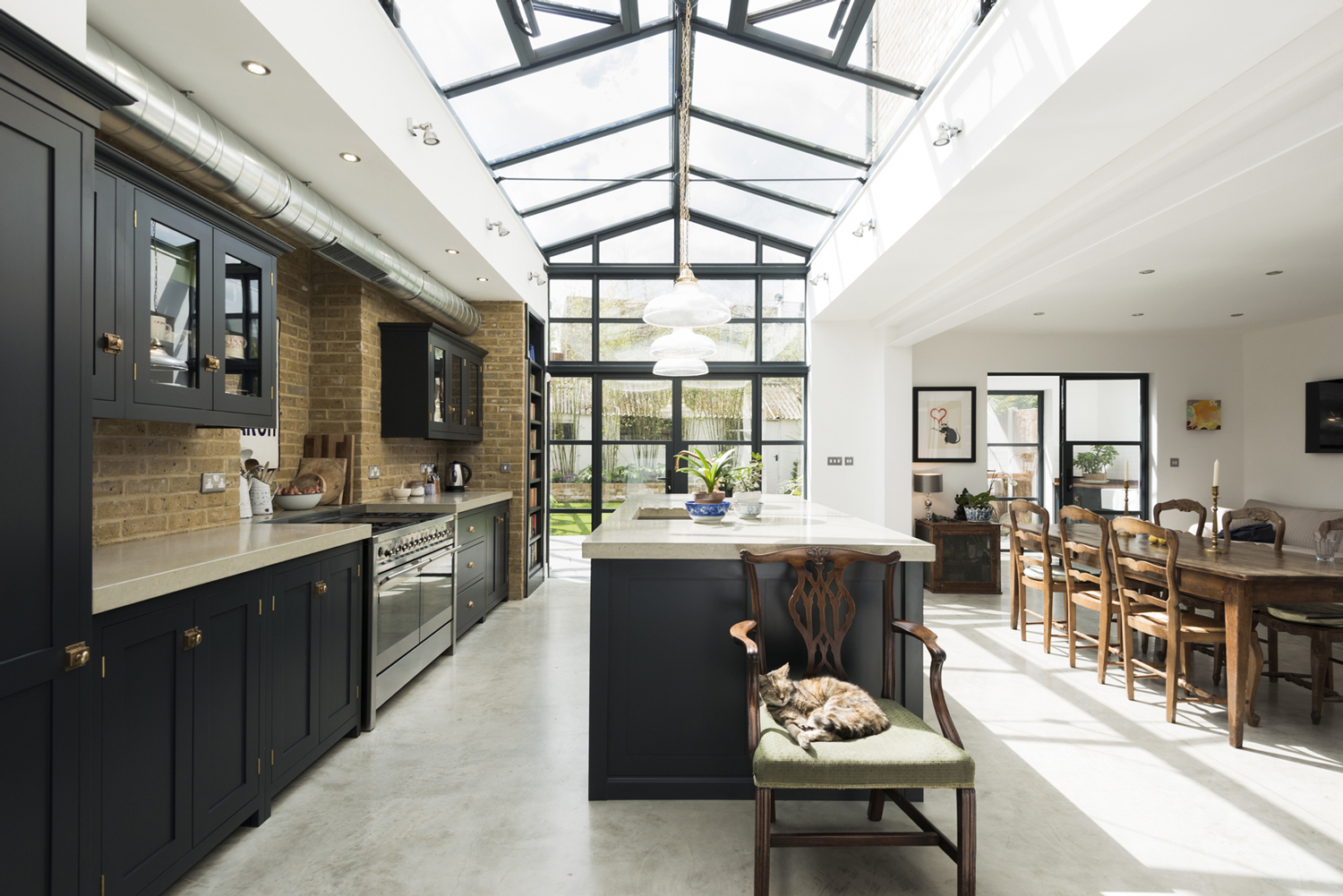Concrete – dividing opinion for decades – Part 2
In the first part of this exploration into the history of the most widely used construction material in the world, (Click here for Part 1) we were sightseers, observing the Roman Empire up to 400 AD. Now, we take a massive leap forward to the post-Second World War era.
Rebuilding Britain
After the Second World War, steel and wood were in short supply, as were, sadly, skilled craftsmen. To rebuild houses, factories, schools and bridges destroyed by bombing raids, concrete – reinforced pre-fabricated concrete, to be exact – came into its own.
By 1948, 40,000 single storey ‘prefabs’ had been built, many out of asbestos cement. They were meant to be temporary dwelling places with an estimated life span of just ten years. Today, seventy years on, a number have been Grade II listed to preserve them for posterity!
 The Arcon MK V, Avoncroft Museum pf Historic Buildings (photograph by Turner & Hoskins Architects)
The Arcon MK V, Avoncroft Museum pf Historic Buildings (photograph by Turner & Hoskins Architects)
Often associated with post-war architecture is the style that came to be named Brutalism, not because its vast grey structures were (perhaps, depending on your point of view) brutal on the eye, but from the French béton brut, which translates as raw concrete. How unfortunate for the image of concrete was the shared etymology of brut and brutal!
‘Piles of concrete.’
For that description of Brutalist urban architecture, we have Prince Charles to thank. He went on to say, in 1987 at the Corporation of London Planning and Communication Committee’s annual dinner: ‘You have to give this much to the Luftwaffe. When it knocked down our buildings, it didn’t replace them with anything more offensive than rubble.’ Many shared his distaste for concrete buildings. Certainly, there were some that few could ever find appealing. However, perhaps Prince Charles was guilty of looking only at one end of the Brutalist spectrum.
There are indeed the utilitarian hastily erected high-rise blocks of flats provided because of public need, and emblematic of the welfare state established in post-war Britain. Then there are sprawling multi-storey car parks and bus stations, and blocky structures like the Barbican and the National Theatre on the Southbank. Finally, at the other end of the spectrum – brutalism meets modernism – there are sculptural creations such as Le Corbusier’s chapel at Ronchamp – a ‘pure expression of poetry.’
 Ronchamp (Image copyright Adobe)
Ronchamp (Image copyright Adobe)
Raw expression
The Brutalist movement stemmed from a philosophy that to encapsulate the true nature of materials, raw expression is necessary. The building’s construction materials and mechanical systems are left exposed, with all their imperfections visible. While other mediums are used, reinforced concrete is generally synonymous with the aesthetic. Often, buildings are a set of modules assembled as one chunky mass into a unified whole.
An admirable ethos of social utopianism, and of communal living and public ownership drove the construction of progressive housing solutions. Buildings were characterised by elevated walkways, known as streets in the sky, which connected neighbouring blocks of flats. The theory was that these would be pleasant, traffic-free places for people to mingle while their children played in safety. Sadly, in practice, the dimly-lit spaces seemed destined to be corridors of unease, generating a sense of fear amongst residents.
Love it or hate it?
Critics of Brutalism think it smacks of totalitarianism and urban decay. It’s cold, grey and, well, brutal. In contrast, film-maker Jonathan Meades produced a documentary called Bunkers, Brutalism and Bloodymindedness: Concrete Poetry. He says about Brutalism that it arose, ‘in reaction to the smooth, sleek, elegant work which had preceded it. It didn’t seek to be pretty, it didn’t seek to soothe. And it was soon the object of loathing. Monstrosity had a new word to prefix it – concrete.’ Bring on the ‘cretinous apes of the demolition community,’ he lamented, with their bulldozers, seeking to erase brutalism from the face of the earth.
Lately, though, a new appreciation of the praiseworthy social ambitions, the bold façades and head-turning appearance of the structures has emerged from the demolition binge. There are initiatives to have buildings listed or otherwise saved from the wrecking ball. Organisations such as #sosbrutalism catalogue over 900 Brutalist buildings and describe themselves as, ‘a platform for a large campaign to save our beloved concrete monsters.’
Concrete examples at Turner & Hoskins Architects
What do we think of concrete? Generally, we use it out of necessity. We aren’t apologists either for its beauty or its ugliness. It’s versatile, and relatively inexpensive, and although the environmental costs can be high it can be recycled. In our designs, we use it for strength or as a base in floors. It can be pre-cast, and reinforced, which is useful for beam-and-block floors, something we commonly see specified by the structural engineer. It isn’t often visible in the projects we have undertaken; however, we do expose it sometimes:
 Concrete floors and worktops: The Bookcase Door (Click here to see more) Photograph credit: deVOL Kitchens
Concrete floors and worktops: The Bookcase Door (Click here to see more) Photograph credit: deVOL Kitchens
…and, in places we have worked on, there are several examples of polished concrete floors and worktops.
I think our attitude is best summed up by a nod to socio-biologist Desmond Morris: ‘The city is not a concrete jungle, it is a human zoo.’ That is to say, we think about the people who will inhabit our buildings and use the best materials available to make their living space both beautiful and functional.
Further reading:
